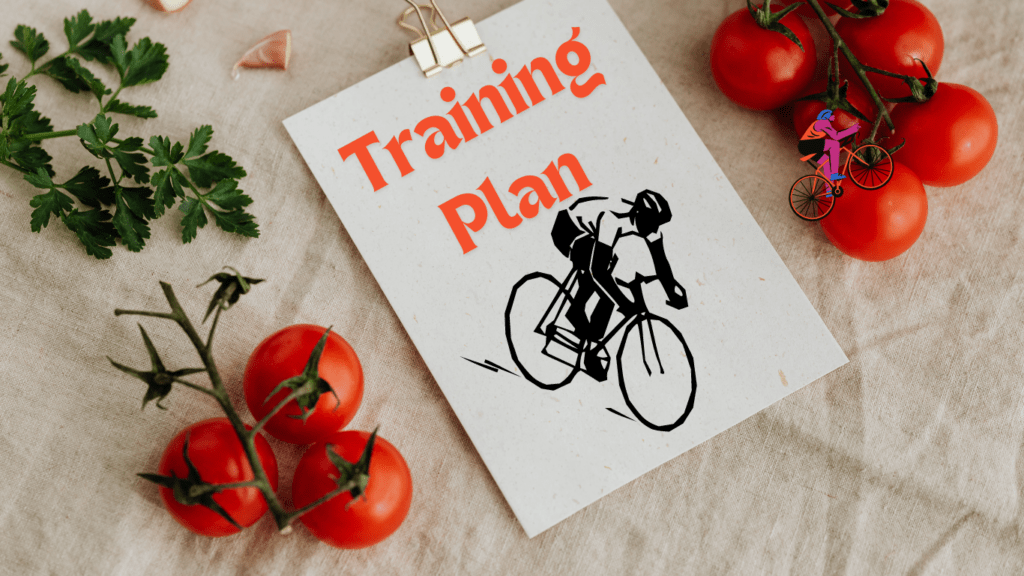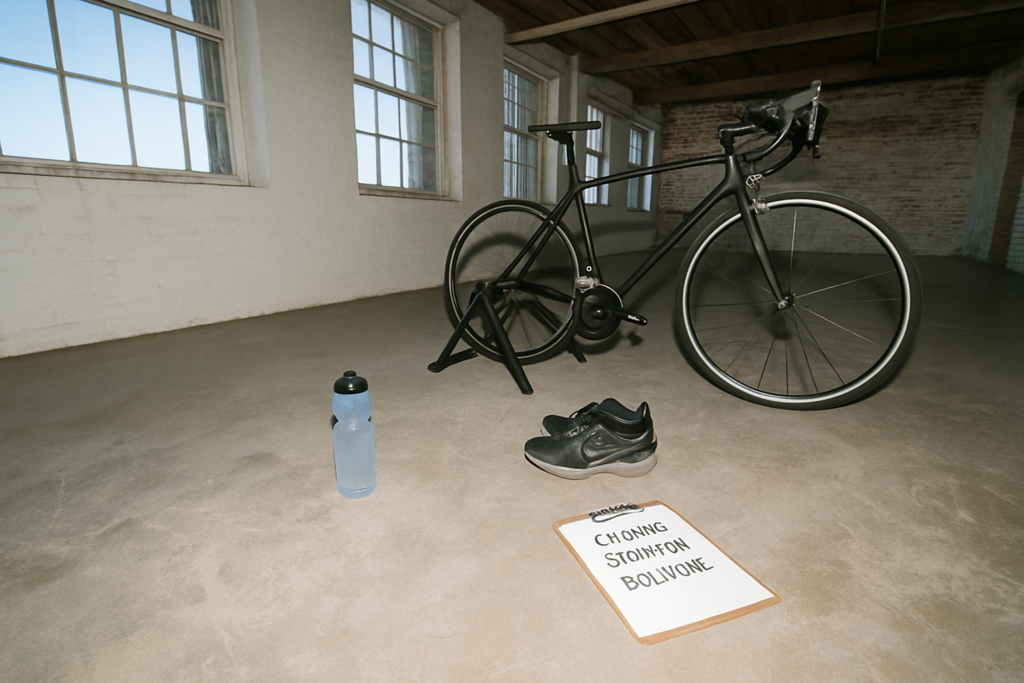Understanding the Basics of Cycling Training
A solid training plan transforms casual rides into targeted sessions that boost performance and stamina. To create an effective plan, consider several crucial aspects.
The Importance of a Structured Plan
A structured plan aligns training with specific goals. It maximizes efficiency by scheduling diverse workouts, ensuring all muscle groups develop evenly. Periodization, including base training, build phases, and peak phases, optimizes performance by focusing on different fitness components at appropriate times.
Key Components of Cycling Training
- Goal Setting: Define clear, measurable objectives such as completing a 100-mile ride or improving time on a specific route. Goals provide direction and motivation.
- Workout Variety: Incorporate different training types like endurance rides, interval training, hill repeats, and recovery rides. Variety prevents plateaus and improves overall fitness.
- Recovery: Plan adequate rest to avoid overtraining and injuries. Use rest days and lighter sessions to allow muscle repair and growth.
- Nutritional Focus: Maintain a balanced diet rich in carbs, proteins, and fats. Proper nutrition fuels workouts and speeds recovery.
- Monitoring Progress: Track metrics like distance, speed, and heart rate using cycling apps or wearables. Periodic assessments help adjust the training plan for continual improvement.
- Consistency: Maintain a regular training schedule. Consistency in workouts ensures steady progress and adaptation over time.
Adhering to these components guarantees comprehensive development in cycling fitness.
Setting Your Cycling Goals
Effective cycling goals align with your fitness level and ambitions. Clear objectives keep you motivated and on track.
Assessing Your Current Fitness Level
Evaluating your current fitness level ensures you create a realistic training plan. Use fitness tests like VO2 max, FTP (Functional Threshold Power), and heart rate zones to gauge your endurance and strength.
These metrics help identify your starting point and tailor your training accordingly. A professional assessment at a sports clinic offers in-depth analysis.
Determining Short and Long-Term Objectives
Specific, measurable, attainable, relevant, and time-bound (SMART) objectives enhance performance. Short-term goals, such as improving your FTP by 5% within 8 weeks, offer immediate motivation.
Long-term objectives, like completing a century ride within a year, guide your overall training direction. Consistently reviewing and adjusting these goals is vital for ongoing progress.
Developing the Training Plan
Creating an effective cycling training plan involves understanding key elements and integrating them into a weekly routine.
Elements of a Weekly Cycling Routine
A successful weekly cycling routine includes varied workouts such as interval training, endurance rides, and strength sessions.
- Interval Training: Enhances anaerobic capacity with high-intensity bursts.
- Endurance Rides: Build cardiovascular fitness with long-distance, steady-paced rides.
- Strength Sessions: Improve muscle power through hill climbs and resistance exercises.
Each session targets different aspects of fitness, ensuring balanced improvements in cycling performance.
Incorporating Rest and Recovery

Rest and recovery are crucial for preventing burnout and injuries.
- Rest Days: Scheduled to allow muscles to repair and grow stronger.
- Active Recovery: Low-intensity activities like light cycling to promote blood flow without straining muscles.
- Sleep and Nutrition: Critical components that support overall recovery and performance.
Balancing training with adequate rest facilitates continuous progress and optimal performance in cycling.
Monitoring Progress and Adjustments
Regularly checking your progress keeps you on the right path and lets you make necessary tweaks to your cycling training plan.
Tracking Your Cycling Performance
Collect data from your rides to assess improvements. Use tools like bike computers or mobile apps to record metrics like distance, speed, heart rate, and power output.
Strava and Garmin Connect offer detailed insights into performance trends over time, providing a solid foundation for evaluating progress.
Engage in self-assessment by noting how you feel during and after rides. Track perceived exertion, fatigue levels, and recovery rate to get a comprehensive view of performance.
When and How to Modify Your Plan
Adjust the training plan based on the collected data and self-assessment insights. Increase or decrease training volume and intensity if performance plateaus or fatigue sets in.
Include more rest if recovery is inadequate, ensuring you avoid overtraining. Modify specific workout types to target weaker areas.
For example, add hill repeats if climbing is challenging or more endurance rides if stamina lags. Adapt the plan to fit your current fitness level, ensuring gradual and sustainable progress.
Recommended Tools and Resources
Utilizing the right tools and resources can significantly enhance your cycling training plan effectiveness. Here are some valuable options to consider:
Apps and Gadgets for Cyclists
Cycling apps and gadgets provide essential data and motivation. Strava, for example, allows you to track rides, compete with others, and analyze your performance.
Garmin Edge devices offer precise GPS navigation, mapping features, and detailed performance metrics. Training Peaks helps with detailed planning and performance analysis, useful for structured training plans.
Zwift provides a virtual cycling environment, allowing you to train indoors with real-time feedback and social interaction.
Wahoo Elemnt series offers customizable screen displays, easy setup via a mobile app, and integrates with other training platforms. These tools aid in monitoring progress, providing comprehensive data to refine your training plan.
Books and Guides on Cycling Training
In-depth knowledge from books and guides can significantly benefit your training.
The Cyclist’s Training Bible by Joe Friel offers detailed advice on training schedules, nutrition, and mental toughness.
Training and Racing with a Power Meter by Hunter Allen and Andrew Coggan provides insights on leveraging power data to optimize performance.
The Time-Crunched Cyclist by Chris Carmichael focuses on maximizing training efficiency with limited time.
The Science of Cycling by Stephen Cheung and Mikel Zabala covers advanced training techniques, physiological principles, and performance strategies.
These resources offer structured approaches, expert advice, and evidence-based strategies to enhance your cycling regimen.

 I’m Brendamee McCartyierr, and as the founder of Cycle Smooth Ride Long, I'm thrilled to bring you the ultimate resource for all things cycling. Whether you're a seasoned rider or just starting on your cycling journey, our mission is to support your passion for two wheels with trusted advice, insightful reviews, and expert tips.
Cycling is more than just a hobby—it's a lifestyle that promotes health, freedom, and adventure. At Cycle Smooth Ride Long, we’re committed to making your ride smoother, longer, and more enjoyable by providing you with the latest in cycling news, nutrition advice, fitness tips, and gear reviews. We also cater to beginners, offering comprehensive guides to help you get started and build confidence on the road.
I’m Brendamee McCartyierr, and as the founder of Cycle Smooth Ride Long, I'm thrilled to bring you the ultimate resource for all things cycling. Whether you're a seasoned rider or just starting on your cycling journey, our mission is to support your passion for two wheels with trusted advice, insightful reviews, and expert tips.
Cycling is more than just a hobby—it's a lifestyle that promotes health, freedom, and adventure. At Cycle Smooth Ride Long, we’re committed to making your ride smoother, longer, and more enjoyable by providing you with the latest in cycling news, nutrition advice, fitness tips, and gear reviews. We also cater to beginners, offering comprehensive guides to help you get started and build confidence on the road.
